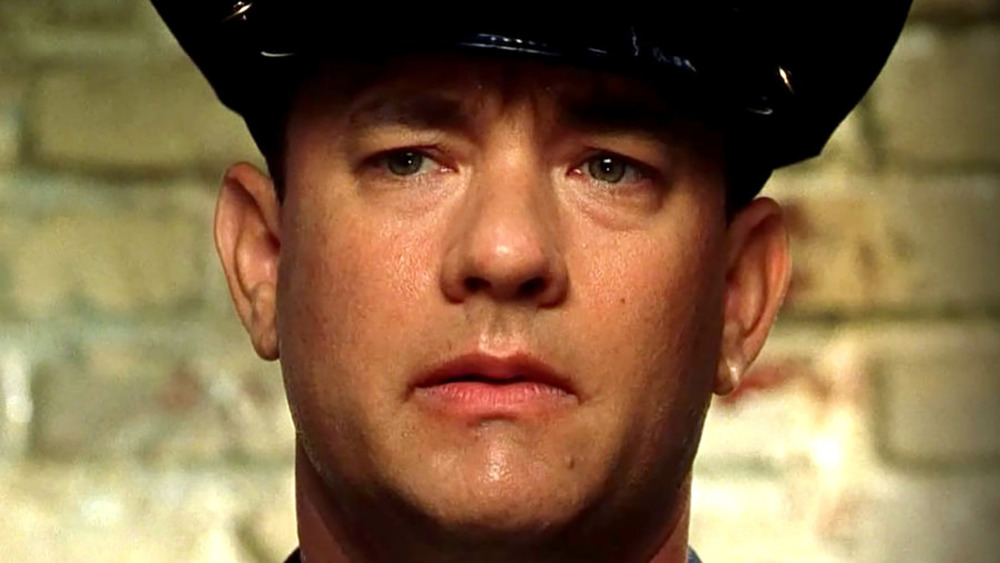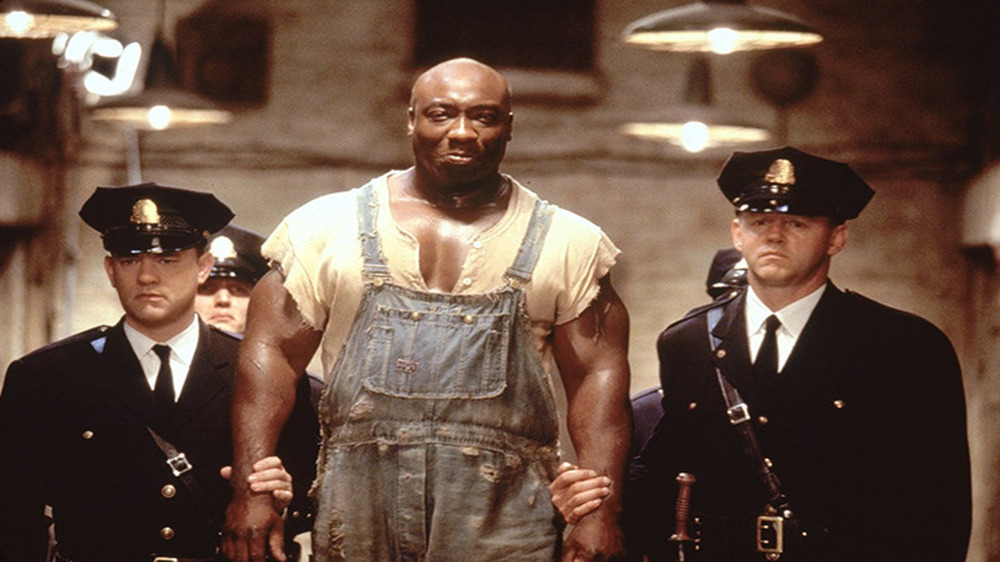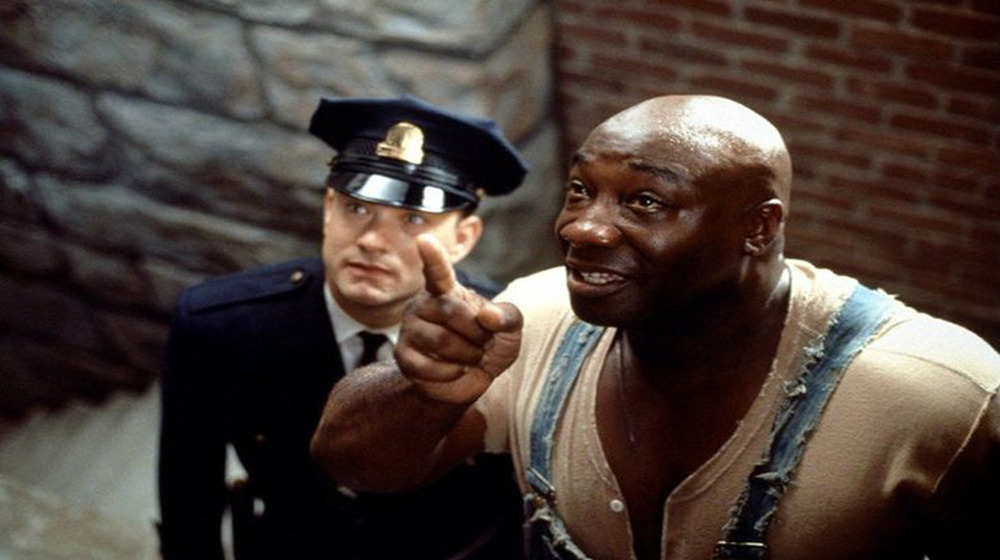The Ending Of The Green Mile Explained
The 1990s were a time when the movie industry was evolving and had the skills to produce instant classics that have gone on to be recreated, rebooted, or revived. There's something about movies from the 1990s that captures authenticity and really great story ideas. One, in particular, is an original story from the "King of Horror" himself, Stephen King. Originally captured as a novel, The Green Mile is King's highest-grossing movie, and rightfully so. The film has received multiple awards.
The Green Mile focuses on the lives of the Death Row guards at a Southern penitentiary, where Paul Edgecomb (Tom Hanks) and the rest of the correctional guards witness supernatural events surrounding a certain prisoner, John Coffey (Michael Clarke Duncan). According to a New York Times review in 1999, "It boils down to a well-populated drama with a relatively simple story." It also evokes a memorable ending that has gone down in cinema history as one of the best and one of the most heart-wrenching. So strap in, and prepare for spoilers that help explain the ending.
The overall theme that leads to the ending
There's a lot to unpack here because the ending of The Green Mile can have several explanations of the details that lead to it. It isn't a secret that John Coffey was a special man, and even though he was executed for a horrible crime he clearly didn't commit, he was somewhat comforted by his fate in the end because he knew his "light" would live on in another way. Coffey ultimately gives solace to those who deserve it such as Mr. Jingles, Melinda Moores (Patricia Clarkson), and Officer Edgecomb. Coffey also has the power to take away life from those who abuse it, such as Percy Wetmore (Doug Hutchinson).
It's evident that death is the front-running topic in The Green Mile, and it's used as a punishment and a scare tactic. There's also a binding sense of karma working throughout the main characters' lives when Officer Edgecomb was relieved of his bladder complications and his nemesis, Officer Wetmore, succumbs to his ailments and is institutionalized for — more or less — his actions throughout the movie.
How the movie compares to the book
According to Bright Side, every single detail in the movie has a purpose, and even the smallest characters have a huge influence on how the movie ends, i.e. Mr. Jingles. The movie also stays relatively close to King's original work. A lot of movies are depicted differently from their source novels, which can make fans a little frustrated, but not so when it comes to The Green Mile. According to a member of Quora, the main difference is the structure of the narrative. In the novel, Paul Edgecomb writes his memories of his time as a prison guard via memoirs, and his friend Elaine Connelly (Eve Brent) reads them. In the movie, he tells his story verbally, which is more powerful on-screen and conveys more emotion more than writings would.
Another powerful moment in The Green Mile was Edgecomb's reaction to the movie Top Hat. Because this was the movie Coffey watched before his death, Edgecomb has a strong reaction to seeing it again. In the novel, this moment isn't there because it takes place in 1932, before Top Hat was released, whereas the film is set in 1935.


